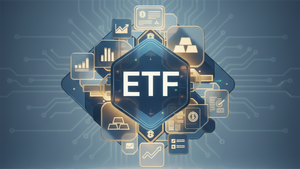
The global landscape of Bitcoin adoption is a patchwork of ambitious government initiatives, grassroots financial revolutions, and cautious regulatory tightening. While nations worldwide grapple with integrating digital assets into their economies, two starkly different narratives illustrate the complexities: El Salvador's challenging journey with Bitcoin (BTC) as legal tender, which has seen a significant reversal, and India's remarkable, unyielding dominance in overall cryptocurrency adoption despite a wary regulatory environment. This tale of two approaches highlights the divergent paths countries are taking as they navigate the volatile yet transformative world of decentralized finance.
The immediate implications of these contrasting scenarios are profound. For developing nations considering Bitcoin for financial inclusion or remittance cost reduction, El Salvador's experience serves as a cautionary tale regarding volatility, public acceptance, and international financial pressures. Conversely, India's thriving crypto market, fueled by a young, tech-savvy population, demonstrates that significant adoption can occur even without formal legal tender status, pushing regulators to find a balance between innovation and oversight.
El Salvador's Bitcoin Experiment Falters as India Leads the Retail Revolution
El Salvador made global headlines on September 7, 2021, by becoming the first sovereign nation to embrace Bitcoin as legal tender alongside the US dollar. Championed by President Nayib Bukele, the move was touted as a revolutionary step towards greater financial inclusion for its largely unbanked population—estimated at 70%—and a means to reduce the high costs associated with international remittances, a critical lifeline that constitutes over 20% of the country's GDP. The government launched initiatives like the Chivo Wallet and even planned for a futuristic "Bitcoin City" powered by geothermal energy, signaling an ambitious embrace of the digital currency.
However, the audacious experiment quickly ran into significant headwinds. Bitcoin's inherent price volatility proved to be a major headache for the national treasury, raising serious concerns about financial stability. More critically, the initiative faced widespread public rejection and a profound lack of understanding. Polls in 2021 indicated that 9 out of 10 Salvadorans didn't grasp Bitcoin, and a staggering 68% opposed its adoption. By early 2025, the government effectively downgraded Bitcoin's legal tender status, making it no longer mandatory for businesses to accept it, though it remains legal for private trade. This pivot was reportedly influenced by conditions from the International Monetary Fund (IMF) for a crucial $1.4 billion loan, highlighting the geopolitical pressures involved. Technical glitches with the Chivo wallet and inconsistent internet access further hampered adoption, revealing a gap between policy ambition and practical implementation.
In stark contrast, India has emerged as an undisputed powerhouse in global crypto adoption, topping Chainalysis's Global Crypto Adoption Index for the third consecutive year in 2025. With an estimated 118,968,644 crypto owners in 2025, representing approximately 11.76% of its population, India's retail demand is robust and organic. Young investors, particularly those aged 26-35, are leading this charge, making up 44.4% of crypto investors in the country. Bitcoin and Ethereum's underlying blockchain networks (Layer 1 assets) account for the largest share of India's crypto holdings (35.52%). This widespread grassroots adoption has occurred despite India's cautious regulatory environment, where cryptocurrencies are legal to hold, trade, and invest in, but explicitly not recognized as legal tender.
India's regulatory journey has seen its twists, including an initial ban by the Reserve Bank of India (RBI) in 2018, which was later overturned by the Supreme Court in March 2020. Since then, the government has imposed a 30% flat tax on crypto gains and a 1% Tax Deducted at Source (TDS) on transactions, measures that, while providing some clarity, have been criticized for their severity and are believed to have pushed significant trading volumes offshore. The RBI and the government remain wary, citing concerns about financial stability, investor protection, and potential illicit use. Despite calls for a global framework during its G20 presidency, India has postponed comprehensive legislation, preferring to observe how other major economies formalize crypto usage. This strategic delay highlights a cautious approach, aiming to mitigate risks while acknowledging the impracticality of an outright ban given the sheer scale of adoption.
Navigating the Volatility: Who Wins and Loses in Bitcoin's Global Mosaic
The divergent paths of Bitcoin adoption and regulation across the globe create a complex landscape of winners and losers among public companies. Businesses deeply entrenched in the cryptocurrency ecosystem, or those strategically leveraging digital assets, often find themselves positioned for significant gains, particularly in environments conducive to crypto growth. Conversely, companies heavily exposed to Bitcoin's inherent volatility or those operating within restrictive or ambiguous regulatory frameworks face substantial risks.
Among the clear winners are companies that have strategically integrated Bitcoin onto their balance sheets. MicroStrategy (NASDAQ: MSTR), for instance, has become synonymous with a Bitcoin treasury strategy, with its stock performance frequently mirroring the digital asset's price movements. Other firms, such as Metaplanet (JPX: 3993) and Semler Scientific (NASDAQ: SMLR), have followed suit, seeking to hedge against inflation and diversify assets. Bitcoin mining companies also stand to gain directly from a rising Bitcoin price and increasing network activity. Major players like Marathon Digital Holdings (NASDAQ: MARA) and Riot Platforms (NASDAQ: RIOT) continually accumulate BTC through their operations, with their stock valuations closely tied to the health of the crypto market and their mining efficiency.
The infrastructure providers and payment facilitators are also key beneficiaries. Companies like Block (NYSE: SQ), through its Cash App, and Coinbase (NASDAQ: COIN), a leading cryptocurrency exchange, play pivotal roles in mainstream adoption by offering user-friendly platforms for buying, selling, and holding digital assets. Traditional payment giants such as Visa (NYSE: V) and Mastercard (NYSE: MA) are not sitting idle; they are actively embracing crypto by partnering with blockchain companies to offer crypto-linked debit cards, enabling users to spend their digital holdings in conventional retail environments. Furthermore, e-commerce platforms like Shopify (NYSE: SHOP) and retailers like Microsoft (NASDAQ: MSFT), by accepting Bitcoin directly or through third-party processors, expand the utility and reach of the cryptocurrency, fostering broader acceptance.
However, the volatile nature of Bitcoin and the unpredictable regulatory landscape create significant challenges for others. Companies that have over-leveraged their balance sheets with Bitcoin or made significant acquisitions at market peaks, without robust risk management, can face considerable losses during downturns. The inherent volatility, often three to four times greater than traditional equity indices, can quickly erode asset value and complicate financial planning. Traditional financial institutions that are slow to adapt to the burgeoning digital asset economy also risk being disrupted. The rise of peer-to-peer crypto transactions and stablecoin-based payments could reduce reliance on traditional banking services and cut into revenue streams from payment processing fees, potentially impacting established players that fail to innovate and integrate crypto solutions. The experiences of companies attempting to navigate El Salvador's initial mandatory Bitcoin acceptance highlighted the operational hurdles, technical issues, and public skepticism that can arise in the absence of clear understanding and robust infrastructure.
A Shifting Paradigm: Broader Implications for Global Finance and Regulation
The contrasting experiences of El Salvador and India underscore significant broader industry trends and regulatory implications for the global financial landscape. Bitcoin's journey from a niche digital curiosity to a mainstream financial asset is undeniable, marked by increasing payment adoption, robust institutional interest, and its growing role in remittances, especially in developing economies. However, this evolution is shadowed by a patchwork of regulatory responses that can either foster innovation or stifle it, depending on their clarity and consistency.
Globally, Bitcoin adoption is surging, with over 420 million people owning cryptocurrency in 2023, a substantial leap from 300 million in 2021. This growth is fueled by a desire for financial inclusion, particularly in lower-middle-income countries where stablecoins offer a hedge against inflation and a cheaper alternative for cross-border payments. The increasing use of crypto for remittances, estimated at $30 billion annually, highlights its practical utility in real-world scenarios, directly impacting traditional money transfer services. Furthermore, institutional investment, once hesitant, has gained significant traction, especially with the launch of spot Bitcoin ETFs in the United States. This marks a pivotal shift, signaling Bitcoin's maturation from a speculative asset to a potentially diversified portfolio component for major financial players, particularly in regions like North America and Western Europe.
The regulatory implications of this widespread adoption are profound and varied. The European Union's comprehensive Markets in Crypto-Assets Regulation (MiCA), fully operational by December 2024, sets a precedent for a harmonized, license-based approach, providing clarity and fostering stability. In contrast, the United States grapples with a fragmented regulatory environment, with federal and state laws applied without a unified framework, creating uncertainty for businesses and investors. The overarching concern for regulators worldwide remains preventing illicit activities like money laundering and fraud, while also balancing consumer protection with the encouragement of technological innovation. The debate often centers on whether digital asset companies should be subject to traditional banking regulations or if a more tailored approach is necessary, a discussion that significantly influences the operational viability and growth potential of crypto businesses.
Historically, the evolution of money—from commodity forms to paper currency backed by national economies—provides a useful lens through which to view Bitcoin's trajectory. Each shift in monetary technology has been met with periods of adjustment, skepticism, and eventually, broader acceptance or rejection based on practical utility, trust, and regulatory backing. El Salvador's top-down, mandated approach to legal tender mirrors historical attempts by governments to impose currency, often struggling without organic public trust and robust infrastructure. The widespread skepticism and technical hurdles encountered in El Salvador, leading to its effective reversal of mandatory Bitcoin acceptance, highlight that government decree alone is insufficient to drive mass adoption without underlying economic stability and public in-buy. Conversely, India's high grassroots adoption, driven by organic retail demand and a tech-savvy population, parallels the natural emergence of new financial instruments that fulfill a genuine societal need, even in the face of regulatory caution. This bottom-up growth suggests that digital assets like Bitcoin can thrive where they offer clear advantages, irrespective of legal tender status, pushing regulators to acknowledge and eventually accommodate this demand through more tailored frameworks.
The Road Ahead: Bitcoin's Evolving Role in a Digital Future
The trajectory of Bitcoin adoption and its regulatory oversight points towards a future of continued expansion, albeit one marked by both significant opportunities and persistent challenges. In the short term, the cryptocurrency market, led by Bitcoin, is poised for sustained growth, largely driven by escalating institutional interest and the increasingly prevalent success of spot Bitcoin Exchange-Traded Funds (ETFs). Industry analysts project Bitcoin could reach approximately $200,000 by late 2025, with some forecasts even pushing towards $250,000, fueled by robust ETF inflows and growing appetite from corporations, pension funds, and even national governments. This signifies a fundamental shift in perception, moving Bitcoin from a speculative niche to a recognized, diversified financial asset.
Looking further down the line, the long-term possibilities are even more ambitious. Visionaries in the venture capital space foresee Bitcoin reaching $500,000 by 2025 and potentially soaring to $1 million by 2040, underpinning its potential as a global reserve currency and a transformative financial tool. These bullish long-term outlooks are grounded in Bitcoin's finite supply, its increasing integration into institutional portfolios, and its capacity to act as a hedge against economic instability, while also promoting financial inclusion in underserved regions. The ongoing evolution of the global regulatory landscape will be critical in shaping this future. While the European Union's MiCA regulation provides a blueprint for standardized rules, other major economies, particularly the United States, are still striving for comprehensive clarity, which could either accelerate or impede widespread adoption depending on the frameworks eventually implemented. International cooperation and harmonized global standards, as seen with the Basel Committee on Banking Supervision's finalized crypto asset exposure rules, will be vital in fostering trust and broader participation.
For El Salvador, despite the reversal of mandatory legal tender status, the journey with Bitcoin continues as a long-term strategic play. The nation continues its daily Bitcoin purchases, holding over 6,300 BTC by September 2025, viewing it as a sovereign asset for future economic transformation. The 2025 Investment Banking Law to institutionalize crypto reserves indicates a more pragmatic approach with safeguards. However, the immediate challenge remains overcoming low public usage rates—where Bitcoin transactions account for only 0.8% of remittances—and addressing the foundational issues of technical literacy and infrastructure that hampered initial adoption. The nation's ability to integrate Bitcoin into its economy effectively hinges on fostering organic public trust and addressing the warnings from institutions like the IMF regarding volatility and transparency.
In India, the future holds immense promise for digital assets, particularly for remittance solutions and financial inclusion for its vast unbanked population. The sustained grassroots adoption, even under stringent taxation and regulatory ambiguity, underscores a powerful inherent demand. However, unlocking the full potential requires a clear, comprehensive regulatory framework. A significant majority of Indian investors (93%) advocate for robust regulation, with many indicating they would increase investments if policies were clearer and taxes reduced. The Reserve Bank of India's concerns about systemic risk and undermining the traditional banking system present a formidable challenge that the government must reconcile with the undeniable public enthusiasm. Overcoming the digital divide in rural areas and enhancing public education about responsible crypto investment will also be crucial. The outcome of these regulatory deliberations will determine if India fully capitalizes on its position as a global leader in crypto adoption or if restrictive policies continue to drive innovation and investment offshore.
The Enduring Significance: Bitcoin's Indelible Mark on Global Finance
Bitcoin's journey from a revolutionary whitepaper to a global financial force marks a profound and enduring shift in the economic landscape. While El Salvador's top-down mandate for legal tender status ultimately faced significant practical hurdles and a partial retreat, India's burgeoning, grassroots crypto adoption showcases the undeniable, organic demand for digital assets even in the face of regulatory caution. These contrasting narratives encapsulate the complexities of integrating a decentralized, volatile asset into diverse national economies, yet both underscore Bitcoin's increasingly permanent structural role in global finance.
The market outlook for Bitcoin remains largely bullish, buoyed by unprecedented institutional integration and the catalytic impact of spot Bitcoin ETFs. With projections forecasting Bitcoin to reach $200,000 by late 2025, and some even envisioning $1 million by 2040, the digital asset is no longer merely a speculative play but a legitimate component of diversified investment portfolios. This institutional embrace, coupled with its inherent deflationary nature reinforced by halving events, solidifies Bitcoin's "digital gold" narrative, positioning it as a hedge against traditional financial instabilities and an enabler of financial inclusion. The lasting impact is clear: Bitcoin has transcended its niche origins to become a mainstream asset with deep liquidity, proving its resilience and utility beyond centralized control.
For investors, the coming months will be defined by a careful watch on several critical dynamics. Globally, regulatory clarity—particularly from major economic powers like the United States under a new administration—will significantly influence market sentiment and institutional capital flows. The potential for new crypto ETFs, beyond Bitcoin and Ethereum, and more relaxed guidance for crypto in traditional retirement accounts, could further accelerate adoption. While institutional participation may temper extreme price swings, Bitcoin's inherent volatility necessitates preparedness for potential corrections, especially in response to macroeconomic shifts such as interest rate policies.
The lessons from El Salvador emphasize the crucial need for robust infrastructure, widespread public education, and organic trust rather than mandated adoption. Its pivot towards a more safeguarded, long-term accumulation strategy indicates a mature understanding of Bitcoin's role as a sovereign asset rather than a day-to-day currency for an unprepared populace. Conversely, India's experience highlights the power of bottom-up demand and the urgency for its government to create a clearer, more equitable regulatory framework that harnesses this enthusiasm without stifling innovation. Investors should continue to monitor these diverse regional approaches, recognizing that balanced, clear, and internationally harmonized regulations, coupled with continued technological advancements, will ultimately unlock Bitcoin's full potential and shape its enduring significance in the evolving global financial order.





